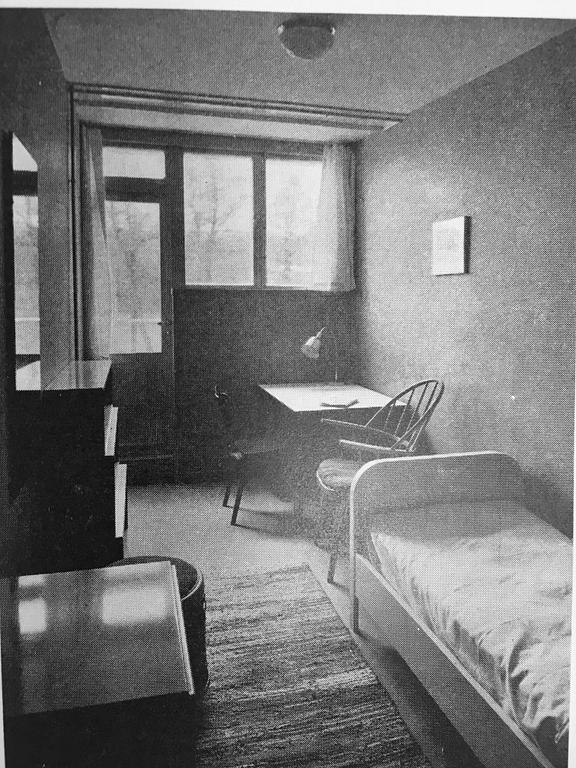Uno Åhrén
a black stained birch chair, Gemla Sweden 1930's. This model was introduced at the 1930 Stockholm Exhibition.
Height 100 cm.
Minor wear.
Saleroom notice
Delvis med retuscher/ partly retouched paint.
Exhibitions
This model was introduced by Gemla at The 1930 Stockholm Exhibition.
Literature
Form: Svenska slöjdföreningens tidskrift, Stockholm, 1930, p 13 and 103.
Sigrid Eklund Nyström, "Möbelarkitekt på 1930-talet, Om inredningsfirman Futurum och hur en ny yrkesgrupp etablerar sig", Nordiska Museets Förlag 1992. Pp 24-25.
Designer
Uno Åhrén was a Swedish architect who graduated from Tekniska Högskolan i Stockholm (the Royal Institute of Technology) in 1919. Uno Åhrén made his debut with a residential interior at the "Home Exhibition" at Liljevalchs in 1917. He was one of the earliest collaborators with Estrid Ericson at the Svenskt Tenn. Åhrén participated in the Paris World Fair in 1925 with a ladies' salon.
Åhrén, who would become one of the main advocates of functionalism, he only worked as a furniture designer at the beginning of his career. The late 1920s in Sweden were marked by Åhrén's radical thoughts and ideas; he was one of the most eager proponents of functionalism, including as a co-author of the publication "acceptera".
Åhrén's focus was primarily on the social perspective in housing issues. From the late 1910s onwards, Uno Åhrén participated in a number of industrial art exhibitions: in addition to the mentioned Home Exhibition in 1917, the Gothenburg Exhibition in 1923, the Paris World Fair in 1925, the Stockholm Exhibition in 1930, and the World Fair in Chicago in 1933. After 1930, Åhrén devoted himself mainly to urban architecture and city planning, including as a city planning architect in Gothenburg from 1932-43 and as the head of Svenska Riksbyggen during the 1940s. He is most renowned for his strong pathos as a driving debater in the social housing issue. For Svenskt Tenn, he designed both furniture and pewter objects of a more luxurious nature.





















































